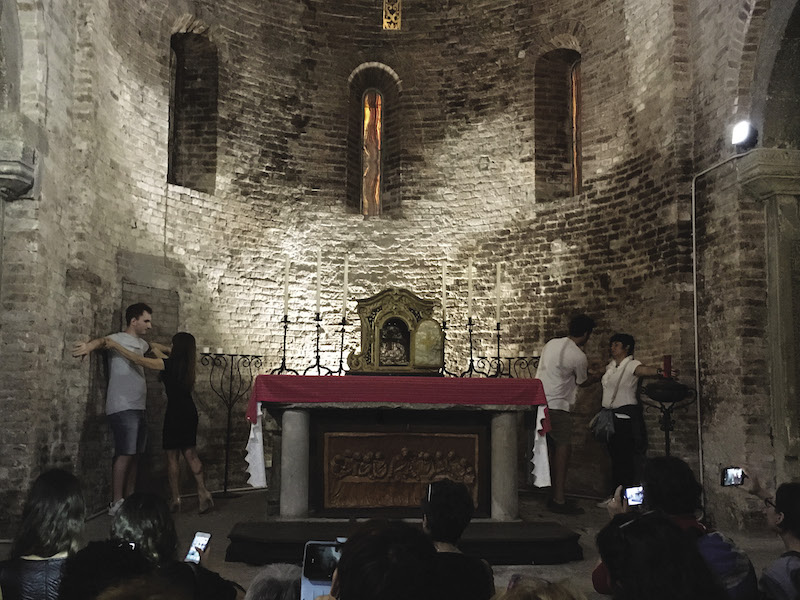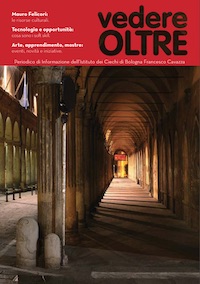Vocational training has always been key for the professional world, but we can now say that is an essential form of learning, qualification and requalification increasingly needed by people of different cultures and ages. Good practices are those functions executed with practical competence and solid theory, continually assessed for their effective application to the professional sectors of reference.

At the Anteros Tactile Museum, during the course of the last few years, we have had two training courses aimed at preparing staff hired in museums for orientation purposes and educational services. Entitled Touch and create ways of thinking, cognitive functions of aesthetic education, the first course focuses on defining the roles and skills of museum guides and presenting itineraries and museum collections to people living with vision loss. In this course the main objective is to gain awareness of the systems of tactile perception and mental reconstruction of images with aesthetic value. The course means to train curricular teachers, support teachers and educators involved in the special teaching of the arts in kindergarten, in primary and secondary levels, first and second degrees. Through specific pedagogical methods useful to the learning processes of forms and concepts in arts and through psychology principals in optical and tactile perception, recommendations are provided for the haptic guidance and narrative description of works of art. Thanks to the modelling laboratories, a functional methodology is illustrated to reinforce manual skills for strengthening the cognitive, imaginative and expressive faculties of blind and visually impaired as well as sighted children and youth. The advanced training course, entitled Sense and form, aesthetic education between body and mind, aims to provide museum staff with specific knowledge about communicating the values of form and content of artistic images. It is achieved through techniques of description, experiential appropriation and practical restitution of the themes relating to portraits and figures, subjects assumed here as cognitive paradigms for the development of concrete, abstract and symbolic thought, for the cognitive, expressive and imaginative life of blind and visually impaired people.
.jpeg)
In this context, special pedagogical methods in arts are provided which are useful for the learning processes of forms, with particular attention to the mental construction of the artistic image, according to the principle of aesthetic equivalent. Through the teaching of proprioceptive and kinesthetic haptics, selected masterpieces are analyzed, with particular attention to the synchrony between verbal description and tactile perception of the images translated into plastic value. In the clay modelling laboratories, a functional methodology is shown to reinforce the manual skills for strengthening the cognitive, imaginative and expressive faculties of blind and visually impaired as well as sighted children and youth, especially in relation to the consciousness of the states of mind in regards to the communication patterns people learn for sharing behavioural models and for understanding psychological structures. Both courses lead to a reflection on the systems of representation and on the levels of perception, cognition and interpretation of images of art associated with the world of concepts, ideas and representations of meaning.
These inclusive courses are aimed at the individual perception of the relationship between form and content, for a more mature development of the introspective functions of representation and for the conscious use of images with aesthetic value in relation to visual impairments. Both courses include a visit to the Institute for the Blind F. Cavazza's Tolomeo Museum and visits to Bologna's Medieval Museum, the National Portrait Gallery and St. Stephen's basilica, places where disciplines like painting, sculpture and architecture can be experienced in polysensorial and polysemic form, making conscious use of the senses and the intellect.





.png)